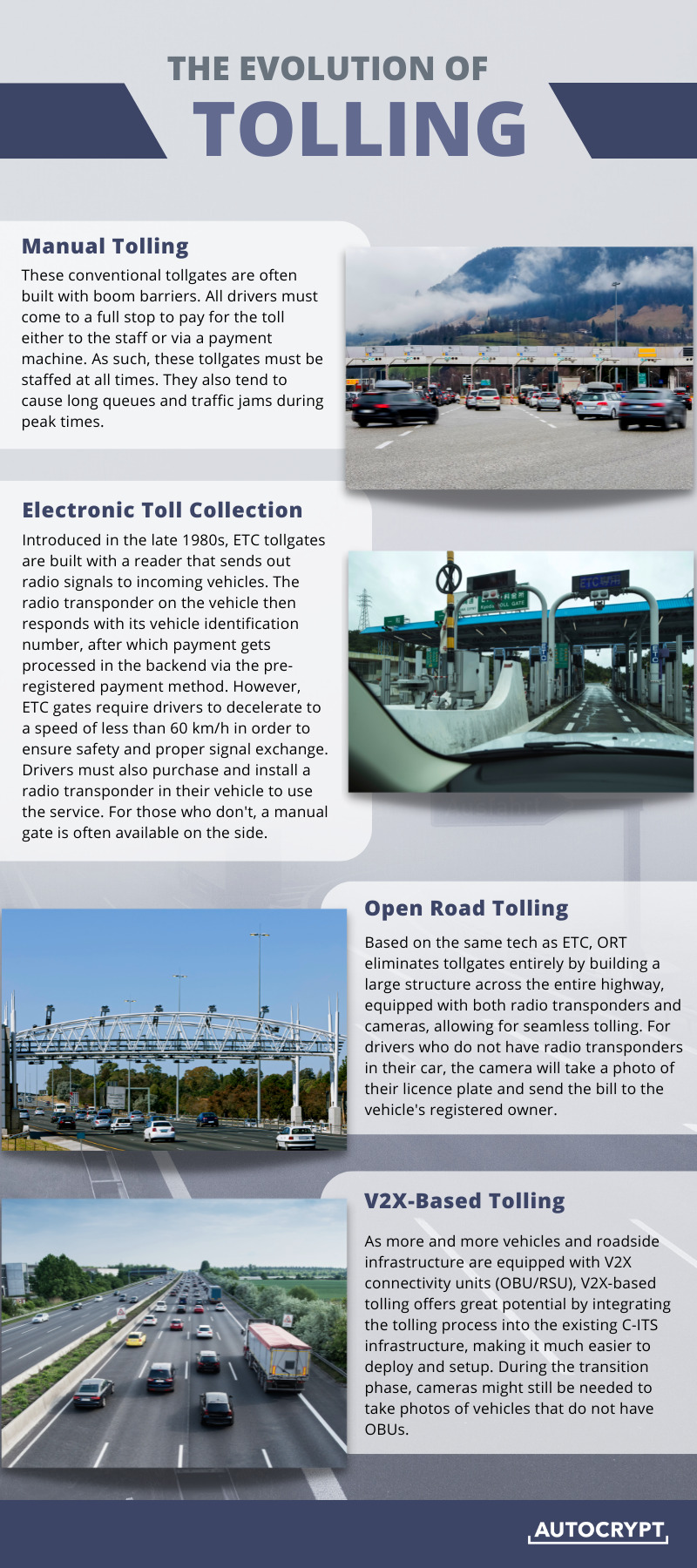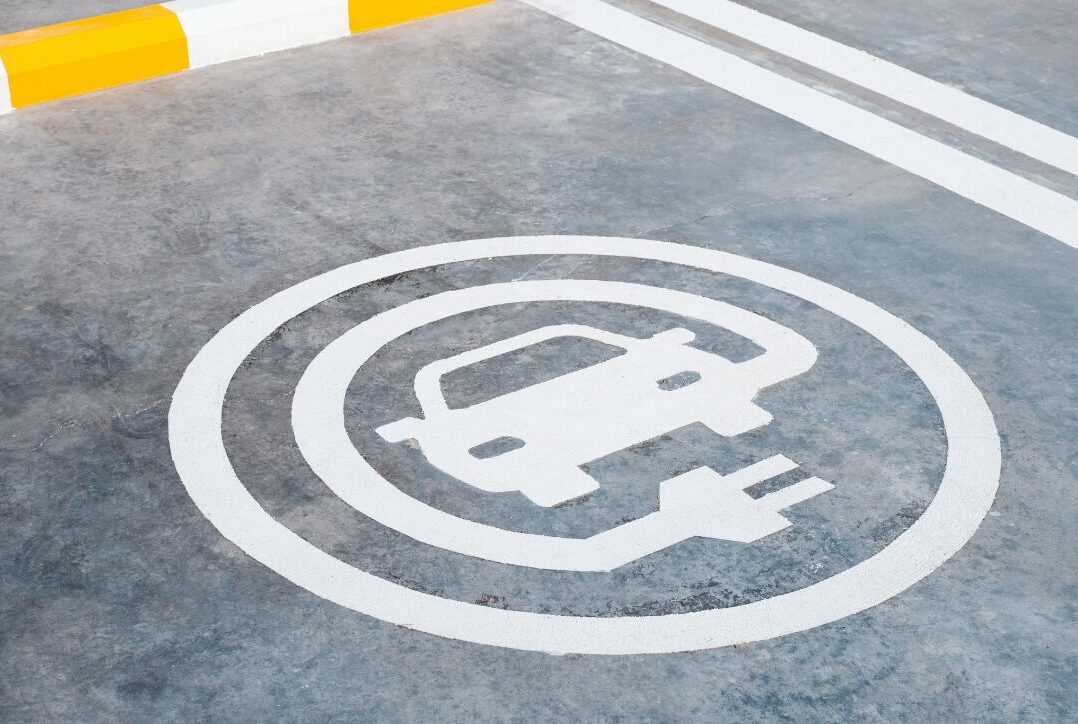The way road tolls are collected has gone through quite an evolution. From manual tollbooths where drivers must come to a full stop to make payments — to the open road tolling (ORT) systems seen on many highways, tunnels, and bridges today, tolling has become increasingly convenient and seamless.
Speaking of a seamless driving experience, another technology that comes to mind is V2X (vehicle-to-everything), the wireless communications technology used for smart transportation. As the foundation for autonomous driving, V2X facilitates all kinds of real-time message transmissions between vehicles, infrastructure, and pedestrians. Today, as more and more vehicles and roadside infrastructure are equipped with V2X connectivity units (onboard units and roadside units), the idea of integrating tolling into the V2X ecosystem has become a hot topic.
The infographic below demonstrates how tollgates have evolved in the past, and how the path toward V2X-based tolling was paved.

The Potentials of V2X-Based Tolling
In terms of the user experience, V2X-based tolling isn’t much different from existing open road tolling systems. Then why is it worth adopting? The main reason is cost efficiency. Both ETC and ORT systems depend on radio transmission, which requires the installation of RFID readers on tollgates and radio transponders on vehicles. These devices, however, are solely made and used for tolling. On the other hand, V2X-based tolling operates on real-time communications between the onboard units (OBU) embedded in vehicles and the roadside units (RSU) embedded in road infrastructure. These devices are used for all types of communications for Vehicle-Infrastructure Cooperated Autonomous Driving (VICAD). In fact, many vehicles and smart road infrastructures today already contain OBUs and RSUs. Strictly speaking, the technology for V2X-based tolling isn’t an innovation in and of itself, but rather a readily available “byproduct” of autonomous driving development. Just like how the functionalities of MP3 players were naturally integrated into smartphones, tolling will eventually be integrated into the V2X ecosystem.
AUTOCRYPT’s Role in Securing V2X Connectivity
Since V2X communications serve a range of security-critical purposes including autonomous driving and tolling, cybersecurity systems must be pre-integrated into the communication process. With decades of experience specializing in encryption and authentication technologies, AUTOCRYPT plays a crucial role in securing V2X messages and participants, preventing unauthorized vehicle access and sensitive data exposure.
AutoCrypt® V2X is a security software package for V2X connectivity units, consisting of a software development kit (SDK) ready to be integrated into OBUs/RSUs, and a PKI-based authentication system for the secure verification of all end-entities.
To learn more about AUTOCRYPT’s V2X security offerings, contact global@autocrypt.io.
To stay informed and updated on the latest news about AUTOCRYPT and mobility tech, subscribe to AUTOCRYPT’s quarterly newsletter.



